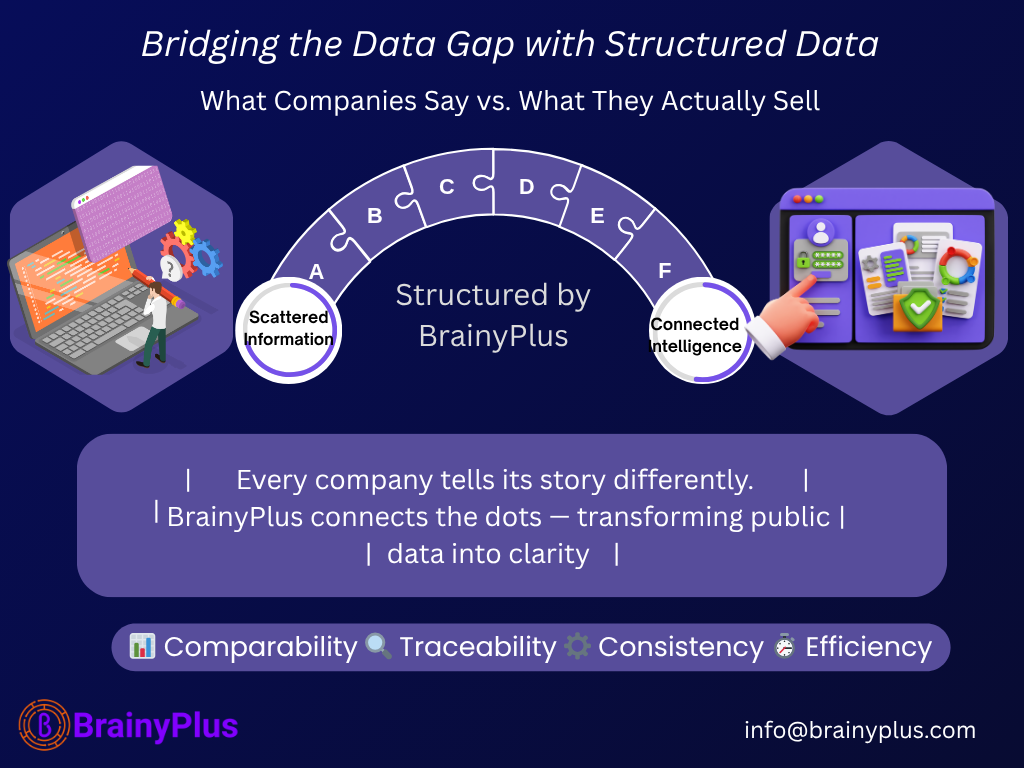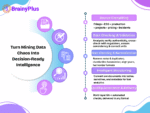
The Hidden Disconnect
Every public company talks about its products and services – but rarely in the same way, twice.
Product names differ across filings and websites.
Features are rebranded, merged, or quietly retired.
Service offerings shift by region, making comparisons nearly impossible.
What seems like straightforward information – what the company sells -becomes a fragmented, inconsistent, and time-sensitive dataset that’s difficult to analyze with confidence.
When Inconsistency Becomes a Risk
For analysts, investors, and corporate strategy teams, these inconsistencies create real business risk.
Product performance can’t be tracked quarter over quarter.
Portfolio exposure and revenue mix remain unclear.
Competitor benchmarking becomes guesswork.
Product launches or discontinuations go unnoticed until too late.
When Products & Services Data isn’t structured, strategy starts relying on assumption – not evidence.
From Confusion to Clarity
Structured Products & Services Data bridges the gap – turning scattered product and service disclosures into standardized, comparable, and trusted intelligence.
Here’s what structured clarity enables:
Comparability – uniform taxonomies across filings, websites, and markets.
Traceability – product and service evolution tracked version by version.
Consistency – clear mapping between offerings and financial metrics.
Efficiency – analysts spend less time cleaning data, more time finding insights.
Structure doesn’t just organize data – it translates complexity into confidence.
Behind the Structure: The BrainyPlus Approach
At BrainyPlus, we specialize in researching, collecting, structuring, and validating Products & Services Data – helping research and investment teams see companies as they truly are.
Our operations are built on precision, transparency, and client trust:
Multi-source aggregation – from publicly available filings, product catalogs, websites, and regulatory disclosures.
Schema-based structuring – mapping offerings to standardized taxonomies.
Quality assurance – combining automation with expert validation.
Order-based delivery – all data is collected only on client request and sourced entirely from public information.
The result: clean, connected, and contextual data that decision-makers can rely on.






